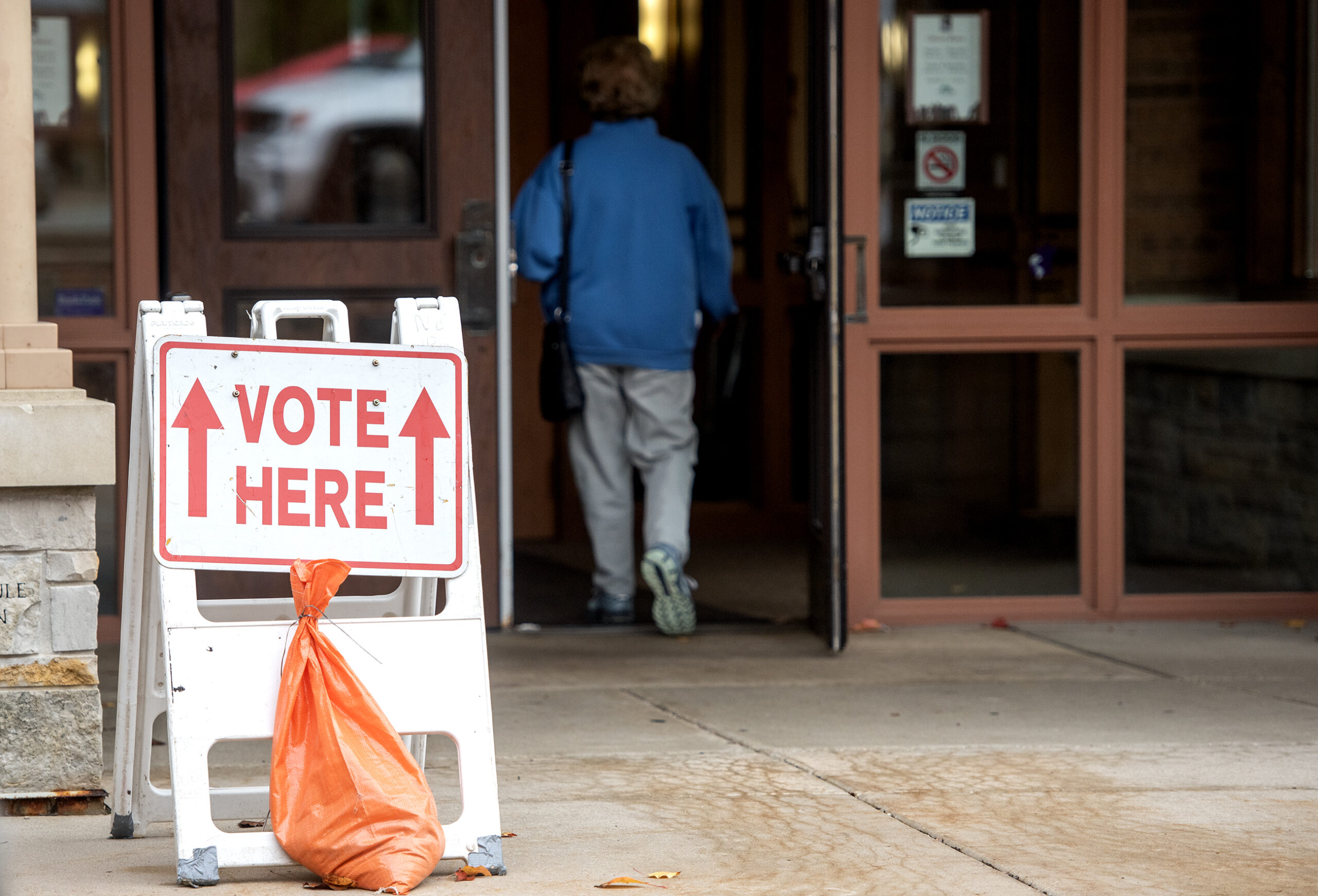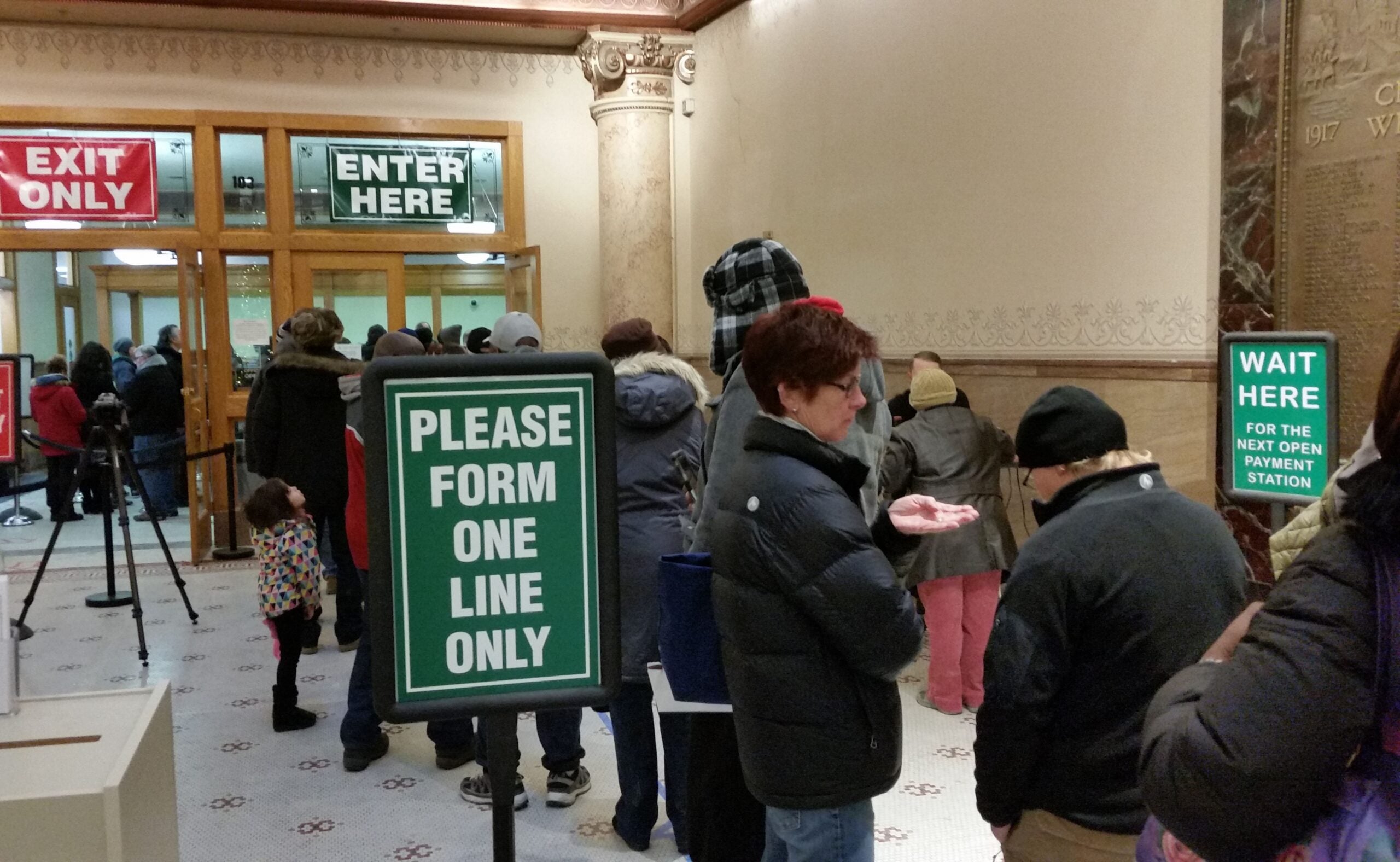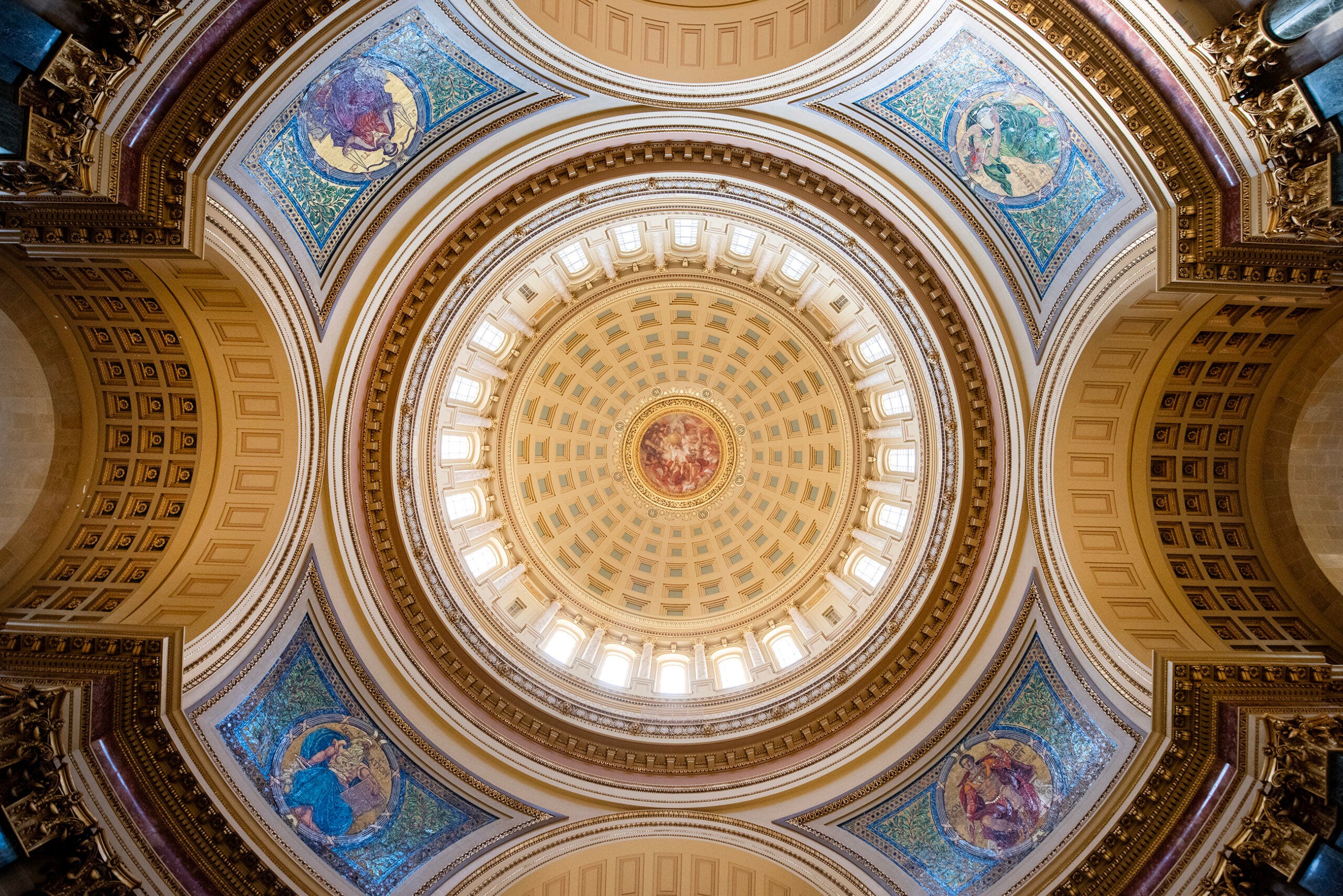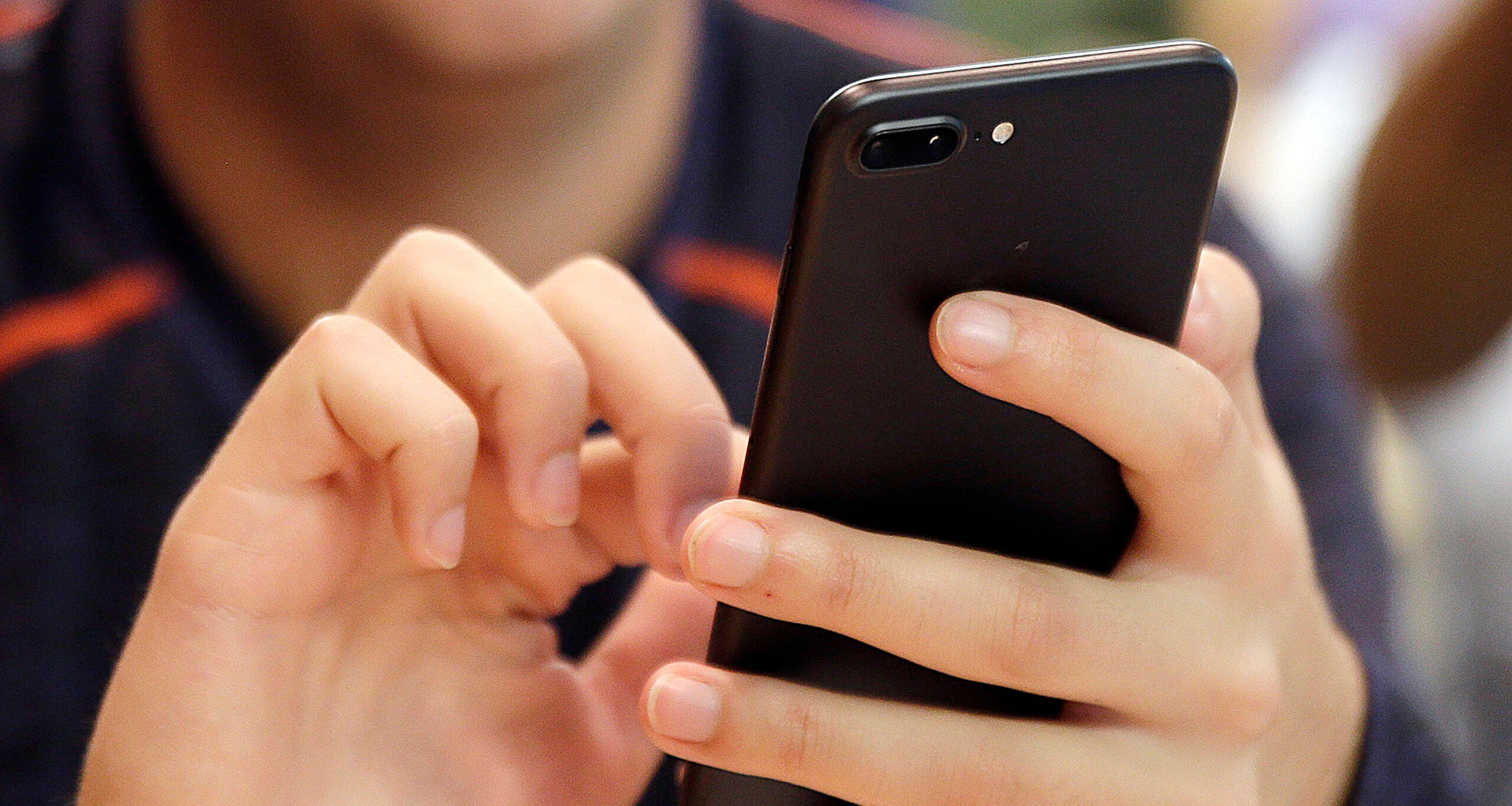Throughout the second half of the 19th century, a single candidate could be nominated by more than one political party in Wisconsin.
But nearly 130 years ago, state lawmakers outlawed that practice. It’s been banned here ever since.
A coalition of Wisconsin voters is now suing, seeking to bring back what’s known as “fusion voting.”
News with a little more humanity
WPR’s “Wisconsin Today” newsletter keeps you connected to the state you love without feeling overwhelmed. No paywall. No agenda. No corporate filter.
What is fusion voting?
The progressive firm Law Forward joined forces with the firm Gass Turek LLC to file the complaint Tuesday in Dane County Circuit Court. If the suit is successful, Wisconsin would adopt a voting system that’s currently being used in New York state and Connecticut.
There, each voter still gets one vote. But a candidate can appear on the ballot more than once, next to every political party that endorses them.
That pushes candidates to find commonalities with more than one party, and it gives minor parties other than the Republicans and Democrats more of a voice, proponents of fusion voting argue.
“This is a way to increase real political representation and political participation,” said Jeff Mandell, Law Forward’s president and general counsel. “For every single person in the state of Wisconsin who’s ever looked at a ballot or at an election and thought, ‘I don’t love either of these candidates, or I wish things were a little bit different,’ this is a way to try to advance that.”
Proponents argue fusion voting will give frustrated voters more choices
In swing state Wisconsin, where elections are known for their ultra-thin margins, parties like the Greens or Libertarians don’t have a real seat at the table, the lawsuit contends.
“Wisconsin’s prohibition against a third party nominating a candidate
also nominated by a major party forces a voter into an unappealing choice,” the lawsuit says. “Register support for a political party the voter does not want to support, waste their vote on a third party ‘spoiler’ candidate, or choose not to vote. This denies each voter a legitimate alternative choice of political expression.”
But if fusion voting comes back to Wisconsin, the options for voters could increase, said John Franke, an attorney who helped file the lawsuit. Franke is a former Milwaukee County judge and a former federal prosecutor. He previously served on Wisconsin’s Government Accountability Board, where he was appointed by former Gov. Scott Walker, a Republican.
“A third of Wisconsin voters, just like throughout the country, do not identify with either major party, and those voters deserve an alternative,” Franke said, noting that a growing number of voters nationwide say they have an “unfavorable view” of both the Republican and Democratic parties. “We represent a group of people and some individuals who are unhappy with the choices that they currently have in between the two major parties, and would like to have more competition and more choices.”
The people suing include former state Senate Majority Leader Dale Schultz, a Republican who endorsed Democrat Kamala Harris for president in 2024, and former Dane County Sheriff Dave Mahoney, a Democrat.
The other plaintiffs are former Republican state Rep. David Deininger; a retired Court of Appeals judge, Lee Rasch, who heads the advocacy group LeaderEthics-Wisconsin; and Kristine Andrews, a lobbyist who’s served as chief of staff to two Republican members of Congress.
They’ve formed a group called United Wisconsin, seeking to allow fusion voting in the state and to “promote legislation and candidates for public office that will advance cooperation across political party lines, compromise, and problem-solving.”

Suit argues fusion voting ban violates the Wisconsin Constitution
United Wisconsin is asking a Dane County judge to overturn state laws that prohibit fusion voting.
The group argues that those laws violate principles in the state constitution, including freedom of speech and association.
“Wisconsin’s fusion voting ban also infringes the rights of political parties
to show support for a candidate through the most vital, direct, and public expression of support available to them—ballot listing,” reads the lawsuit, which is being filed against the Wisconsin Elections Commission. “And Wisconsin’s fusion voting ban interferes with the rights of individual voters to associate with the political parties of their choice, as well as the rights of political parties to associate with one another and with certain candidates and potential candidates.”
Additionally, United Wisconsin argues that the ban violates Wisconsinites’ right to “free government” and to equal protection under the law.
“The government can’t limit our choices in the election world without some really good reasons, and there simply aren’t any good reasons to limit voter choice in the way that the law does,” Franke said.
What’s the history of fusion voting in Wisconsin?
The history of fusion voting in Wisconsin goes back more than a century.
Throughout the latter half of the 1800s, candidates here could seek nominations from multiple parties. In fact, the suit argues that, without fusion voting, Wisconsinites may never have formed the Republican Party 171 years ago.
“In 1854, several active political parties in Wisconsin organized a meeting
at a schoolhouse in Ripon, Wisconsin,” the suit says. “They strategized about how best to advance their shared goals in opposition to the Democratic Party, which was the center of political gravity at the time. Their meeting gave birth to the Republican Party, which grew quickly in stature and power—thanks in part to fusion voting.”
But, as described in the lawsuit, Republican state lawmakers eventually chose to ban fusion voting in 1897 once that system became a threat to their political dominance. The suit says Republicans feared the growth of Democrats and the smaller political parties that aligned with Democrats.
In southern states, Democratic lawmakers took similar actions in the post-Civil War era, to preserve their own control, Franke said.
“These anti-fusion laws were passed for the wrong reasons, and basically for unconstitutional reasons, and all of this occurred in relatively a short period of time,” Franke said.
Currently, only New York state and Connecticut use full fusion voting, where a candidate is listed on the ballot next to every party that’s backing them.
Oregon and Vermont have partial fusion voting, where a candidate appears once on the ballot next to a list of every party that supports them, according to Ballotpedia.
Mandell and the members of United Wisconsin are hoping that Wisconsin can be the next testing ground for fusion voting in the 21st century.
“When we look back at our history, what we recognize is that fusion voting was banned because it works,” Mandell said. “It was a way … and it can again be a way to bring more people, more political parties and more issues into the conversation.”
Editor’s note: This story was updated with additional biographical information for John Franke.
Wisconsin Public Radio, © Copyright 2025, Board of Regents of the University of Wisconsin System and Wisconsin Educational Communications Board.







